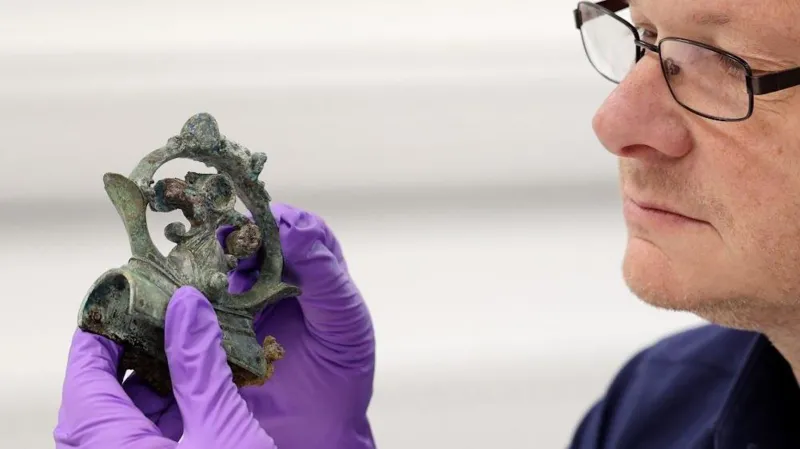Archaeologists have helped uncover one of the “largest and most important” Iron Age finds in the UK. The Melsonby Hoard was discovered in a field near Melsonby, North Yorkshire, by metal detectorist Peter Heads and excavated with the help of Durham University. It includes more than 800 items, including two cauldrons or vessels, horse harness, bridle bits, ceremonial spears, and 28 iron tires, believed to have been buried about 2,000 years ago. Historians believe this “unprecedented” find could lead to a “major re-evaluation” of the wealth and status of the elite living in northern Britain at the time.
After the initial discovery was reported to the authorities in December 2021, the site was excavated in 2022, with the support of the British Museum and a £120,000 grant from Historic England. Early analysis of the hoard, released on Tuesday, suggests that many of the items had been purposefully burnt or broken before being buried as a show of power and wealth. Tom Moore, head of the Department of Archaeology at Durham University, said the size and scale of the find was “exceptional for Britain and probably even Europe.” He said the hoard showed there was more wealth in the north of England at the time than previously thought. “Whoever originally owned the material in this hoard was probably part of a network of elites across Britain, into Europe, and even the Roman world,” he said. “The destruction of so many high-status objects, evident in this hoard, is also of a scale rarely seen in Iron Age Britain and demonstrates that the elites of northern Britain were just as powerful as their southern counterparts.”
It is thought the objects may have been burnt on a funerary pyre before being buried, though no human remains were found.
In the archaeology labs at Durham University, there’s a real buzz about the unveiling of the Melsonby Hoard. Curators feel this is the discovery of a lifetime. Hundreds of recovered artifacts are spread out in a climate-controlled room on long tables. You have to use your imagination a bit; Iron Age artifacts from 2,000 years ago have rusted or faded and are far from their original glory. Some of them were decorated with coral, which has bleached over the centuries. But it’s the story they tell that’s extraordinary.
Iron Age experts now have evidence that people 2,000 years ago had four-wheeled wagons as well as two-wheeled chariots. They now have proof that Iron Age residents of northern England had trading connections with the continent and the growing Roman Empire. This will keep experts busy for years. There’



